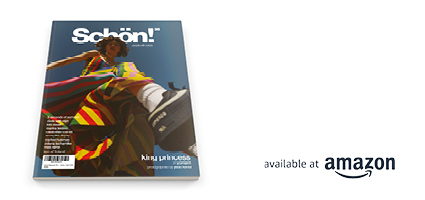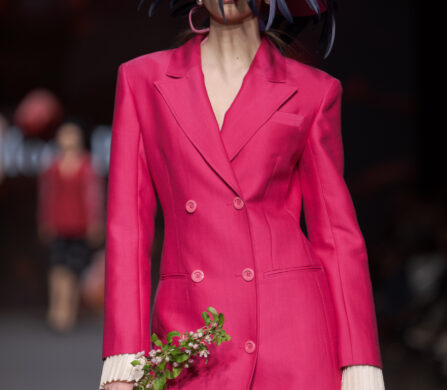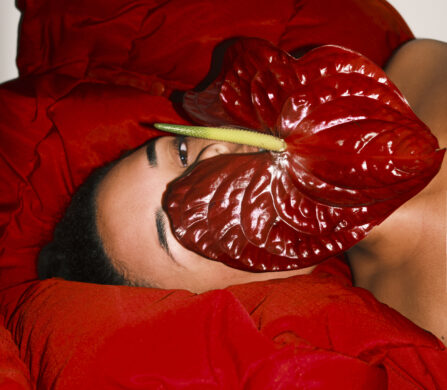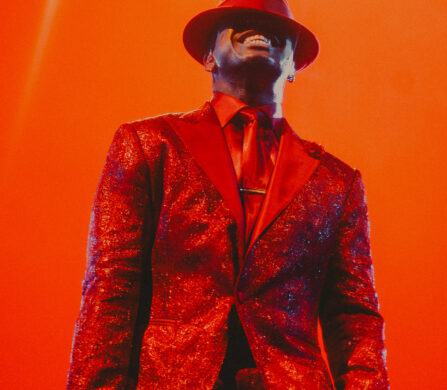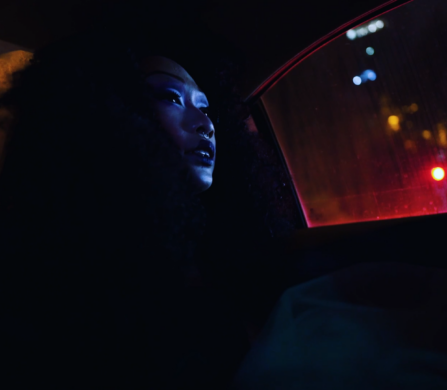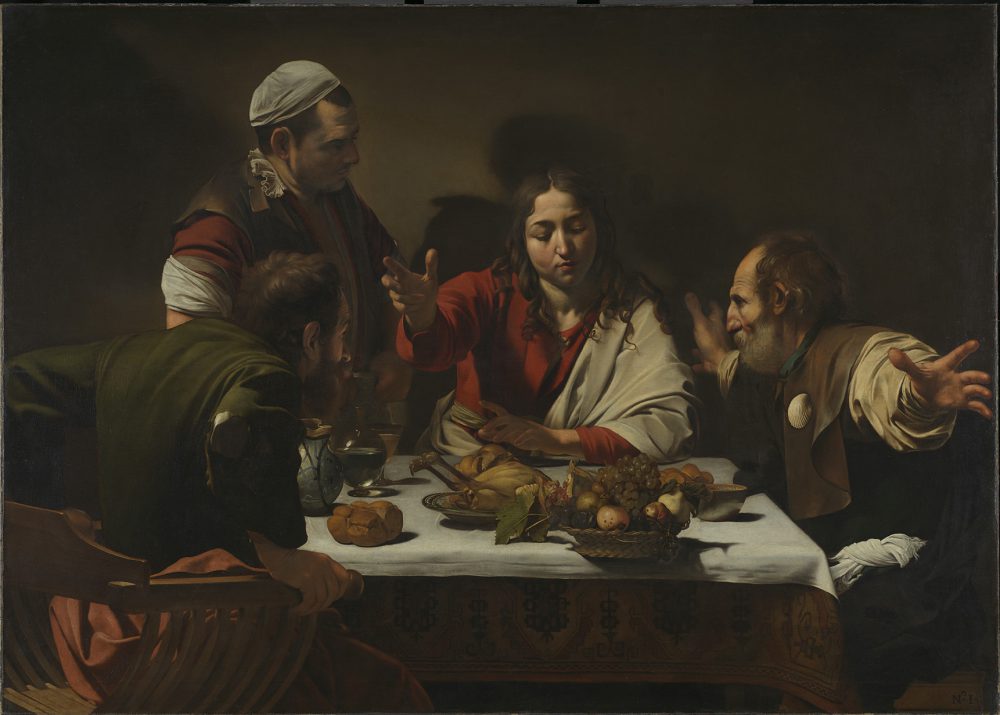
Michelangelo Merisi da Caravaggio
The Supper at Emmaus, 1601
Oil on canvas
141 x 196.2 cm
The National Gallery, London
© The National Gallery, London
Caravaggio is one of the 17th century’s most visionary storytellers. He reinvigorated bible stories, never afraid to experiment with the sacred and profane, but also found narratives in the everyday lives of youths, musicians and fortune tellers. Using imagery as his weapon of choice, Caravaggio influenced a generation of imitators with his awe-inspiring style.
Caravaggio’s unmatched use of realism, dramatic lighting and emotive storytelling made for paintings reminiscent of still shots from a film. His revolutionary style is characterised by mastering chiaroscuro, the contrast of light and shadow which lends each work its cinematic feel. His unique approach transformed European naturalism from the moment his first public commission was unveiled in 1600, and ignited an army of admirers, called the Caravaggisti, who took inspiration from the artist’s work.
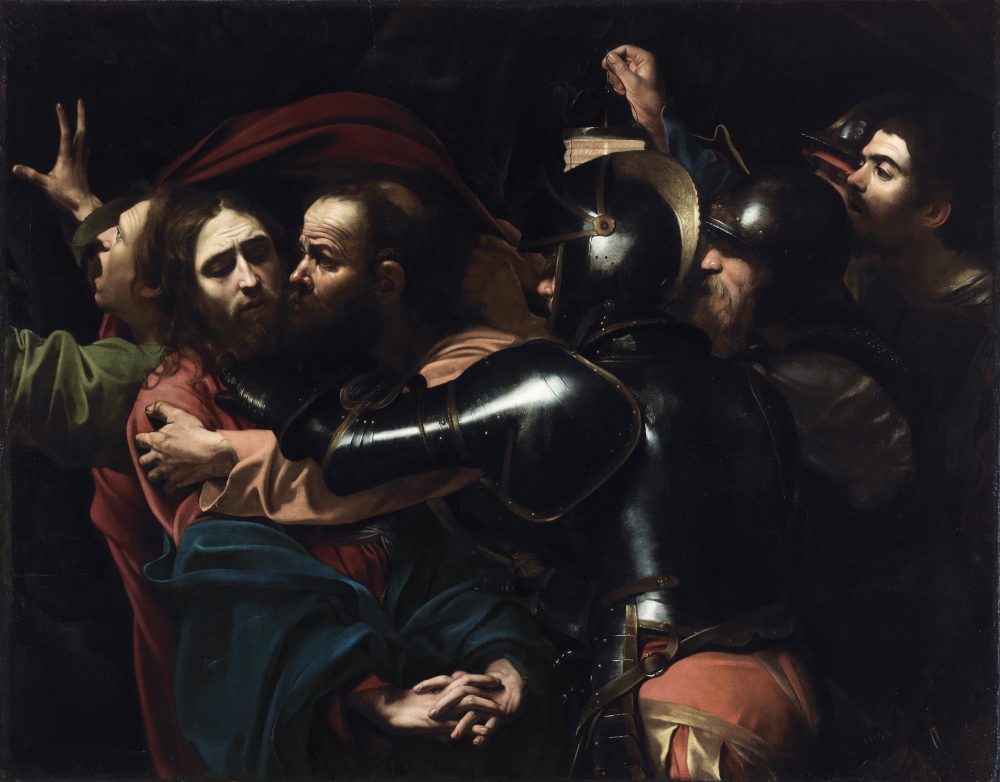
Michelangelo Merisi da Caravaggio
The Taking of Christ, 1602
Oil on canvas
133.5 x 169.5 cm
On indefinite loan to the National Gallery of Ireland from the Jesuit Community, Leeson St., Dublin who acknowledge the kind generosity of the late Dr Marie Lea-Wilson
Photo © The National Gallery of Ireland, Dublin
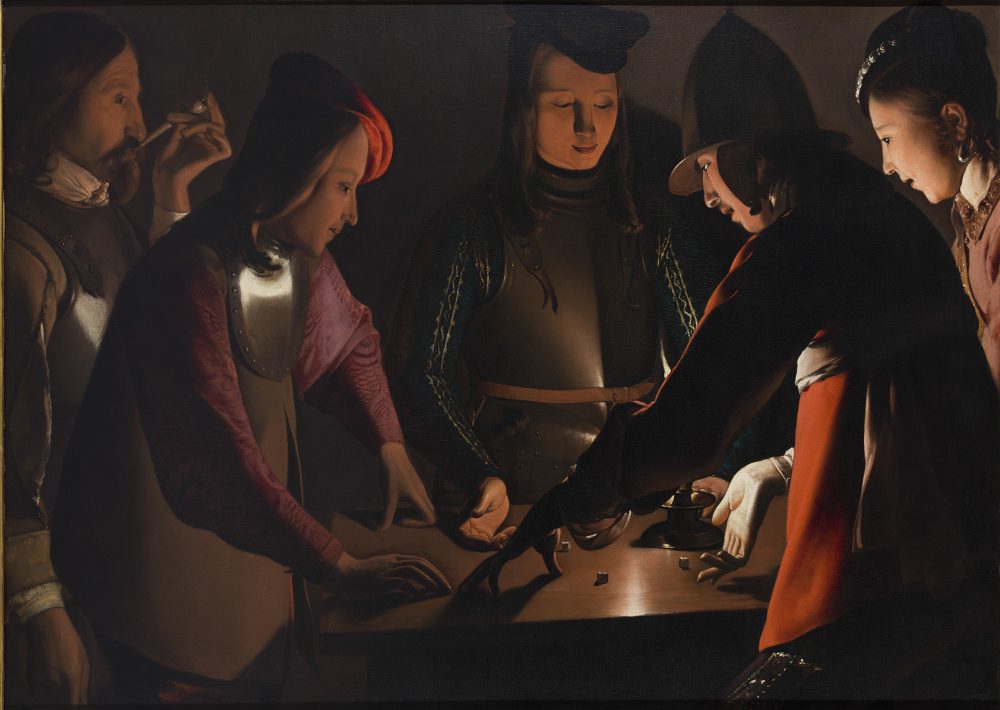
Georges de La Tour and Studio
Dice Players, about 1650-1
Oil on canvas
92.5 × 130.5 cm
© Preston Park Museum and Grounds
The creative footprint Caravaggio left during and after his eventful life is precisely what motivated The National Gallery, London, The National Gallery of Ireland, and The National Galleries of Scotalnd to collaborate on an exhibition celebrating his greatest work surrounded by the paintings of those he influenced. Works include those of his friends, such as David and Goliath (1605-7) by Orazio Gentileschi, paintings by Spanish artist Jusepe de Ribera, as well as Dutch, French and Flemish art showcasing his international influence. Highlights of the exhibition include Caravaggio’s most iconic works: Saint John the Baptist in Wilderness (1603-4,) The Supper of Emmaus (1601) painted for Italian nobleman Ciriaco Mattei, and spell-binding The Taking of Christ (1602) depicting the deceitful kiss of Judas with Caravaggio’s signature theatricality and dynamism.
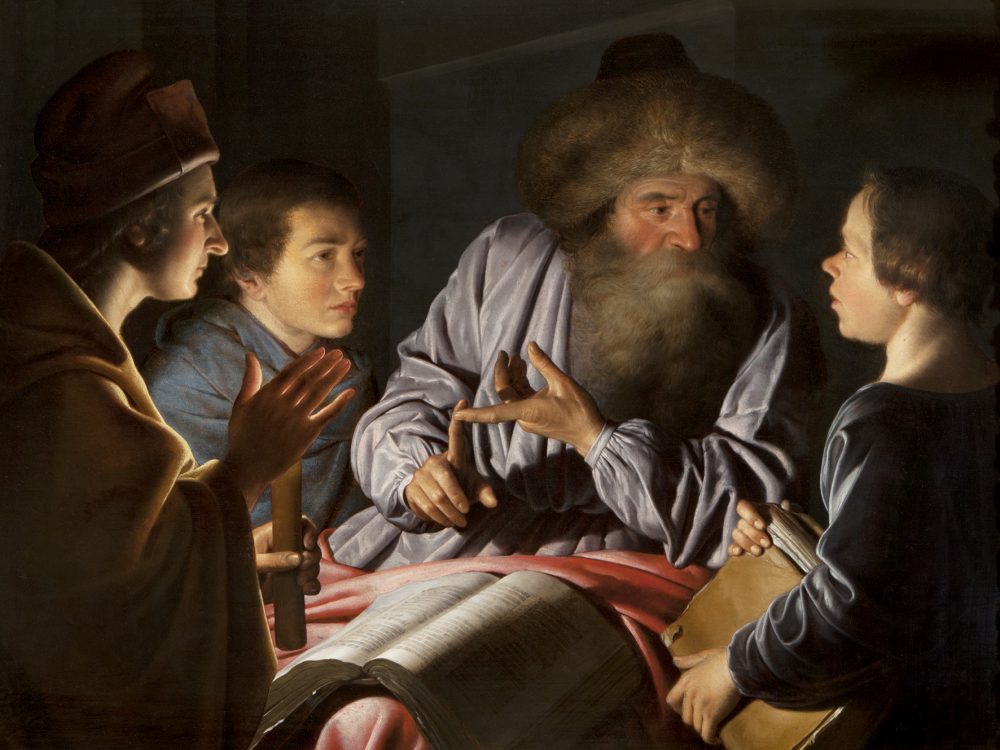
Willem van der Vliet
A Philosopher and his Pupils, 1626
Oil on panel
83.8 x 113 cm
© National Trust for Scotland, Brodie Castle
The exhibition was curated by scouring stately homes, private collections, museums, castles and churches across Britain and Ireland, resulting in broad and expansive collection of Caravaggesque works, including hidden gems the public may not be so familiar with.
Art historian Giovanni Pietro Bellori deemed Caravaggio a “true imitator of nature” in 1672. Four centuries later, his contribution to Baroque art still remains as impressive and thought provoking.
Beyond Caravaggio is at The National Gallery, London until 15th January 2017.
Words / Shama Nasinde
Follow her here.
Discover the latest issue of Schön!.
Now available in print, as an ebook, online and on any mobile device.












